This year should be your most adventurous yet. After all, it’s not every day that you get to travel to the far-flung corners of the world, so you’ll want to make your trip (or trips) spectacular. And on that note, we’ll help you find some of the top off-the-radar destinations so you can explore the roads less taken.
To curate this list of emerging travel hot spots, we looked to the experts at REI. They’ve traveled the world to find interesting, off-the-radar destinations that will likely be growing in popularity over the next few years. But you’ll have a leg up by going before the tourist throngs overwhelm these locales.
Atacama Desert, Chile
“The Atacama is like no other place on the planet—it feels more akin to the moon or Mars,” says Kelsey Wenger, an REI Adventures program manager. It’s one of the driest places on Earth, which results in otherworldly landscapes and incredibly clear skies for stargazing. “It may sound cliché, but you really have to see it to believe it,” she says.
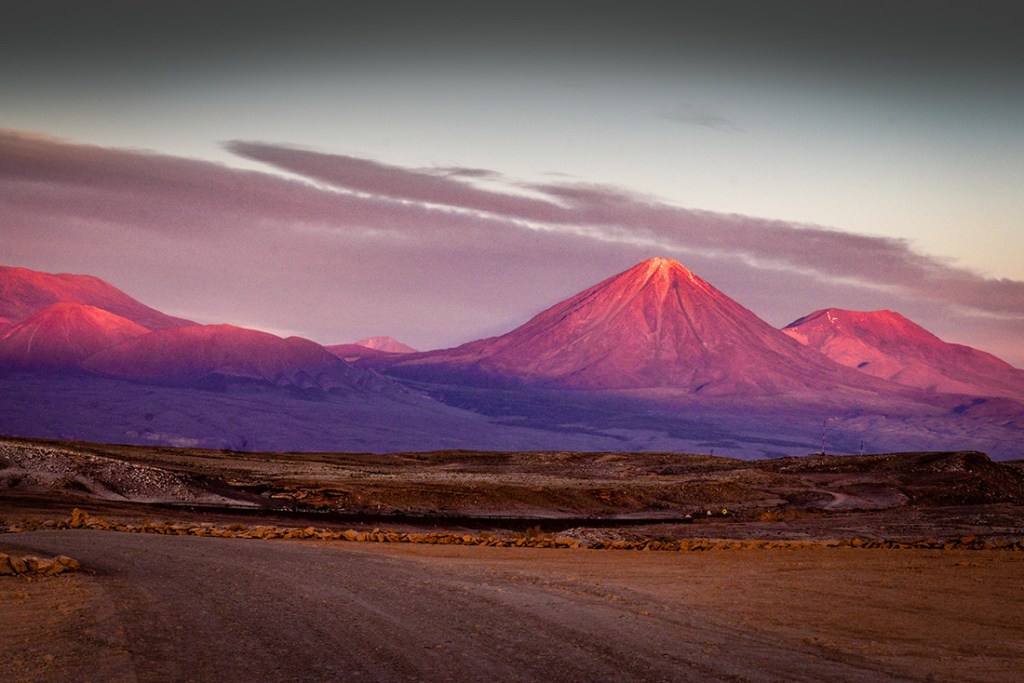
The high-desert glow of sunset ripples across the Atacama. (Photo Credit: Winniepix under CC BY 2.0)
The Atacama is a high-desert plateau that sits at nearly 8,000 feet in elevation. The landscapes include endless salt flats ringed by 18,000-foot volcanoes, sand dunes, geyser fields, mountain lagoons filled with flamingos and lunar-like valleys sculpted by the wind and sun over the eons.
It has a huge variety of adventure activities to catch your attention—from mountain biking to sandboarding to high-altitude volcano ascents. Visit the geysers of El Tatio at sunrise, hike a nearby volcano, mountain bike through the Devil’s Throat, get lost in the Valley of the Moon or watch flamingos in the Salar—it’s all up to you.
Colombia
A veritable feast for the senses, Colombia is a top pick for its rich fusion of urban and outdoor experiences.The country is home to vibrant street art, some of the world’s best coffee and a seemingly infinite variety of adventure activities. As such, the country has become increasingly popular on the traveler circuit with boutique hotels, hip restaurants and seaside resorts popping up all across the country. Many travelers love Colombia as it’s welcoming to tourists while still feeling like an off-the-radar destination. Also, there are more and more direct flights from the United States to Colombia every year.
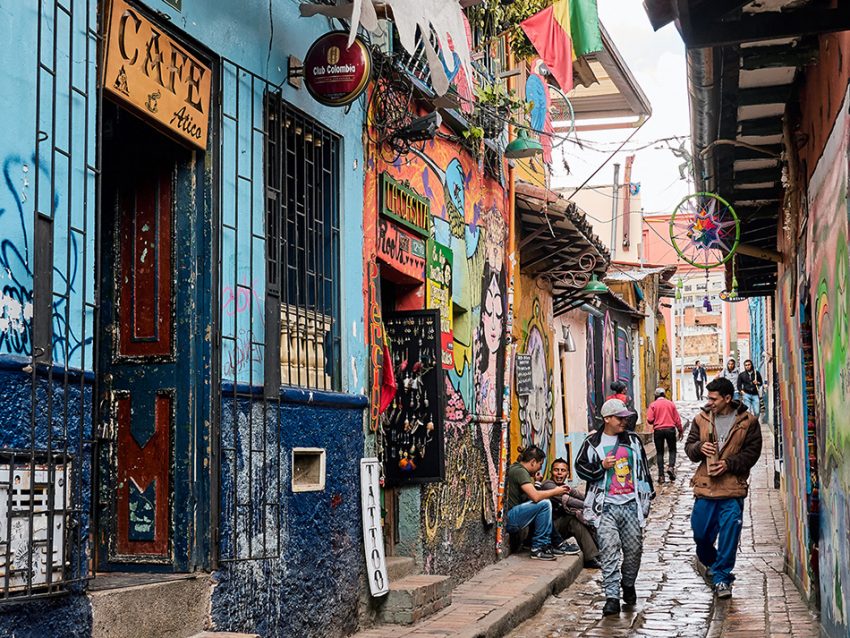
Bogota’s colorful nooks create many opportunities for urban exploration. (Photo Credit: Pedro Szekely under CC BY-SA 2.0)
“Colombia is the unsung hero of travel in South America,” Wenger says. “Every day in Colombia is guaranteed to be a new adventure, whether you’re wandering the cobblestone streets of Cartagena, hiking beneath the towering Quindio wax palms or learning how to harvest coffee beans from the plant.”
In short, Colombia has everything. It’s the only South American country with coastline on both the Caribbean Sea and the Pacific Ocean, making for plenty of water sport fun. Add in cloud forests, glaciated mountains, rolling coffee plantations and even a little slice of the Amazon, and you have a country that’s home to 10 percent of the world’s biodiversity. In fact, it is one of only 17 megadiverse nations in the world. Hop on a couple of short flights within the country and you can visit all of those different climes in one trip.
Four Corners, United States
The Four Corners region is the point where Colorado, Utah, Arizona and New Mexico meet. Within its boundaries lie a variety of spectacular national parks, national monuments and unique landscapes. Despite being a treasure trove of natural and human history, many of the outdoor destinations within the Four Corners are still off the beaten path.
“With its awe-inspiring landscapes and fascinating human history, a trip through the Four Corners region is an adventure into the heart of the American Southwest,” says Andrew Kronen, an REI Adventures program manager. “Any fan of Edward Abbey will have great appreciation for the astonishingly colorful geology, expansive views and remarkable cultural highlights of this breathtakingly beautiful desert wonderland.”

Spider Rock as seen from the rim of Canyon de Chelly, Arizona.
Why visit? Many of the parks and monuments in the Four Corners region contain a tremendous variety of well-preserved Ancestral Puebloan ruins, artifacts and rock art panels. Some structures and rock art date back thousands of years and are easily accessible via a short hike. That’s not to downplay the natural features, including soaring sandstone buttes, deep river-carved canyons and wind- and water-sculpted rock formations. The geological composition of the region’s rock formations create an ever-changing color palette. The most vivid colors occur at sunrise and sunset, when you can admire the intricate, striated color bands of the area’s geology.
Iconic destinations abound within the region, and include Mesa Verde and Canyonlands National Parks; Bears Ears, Navajo and Canyon of the Ancients National Monuments; and Chaco Culture National Historical Park. Whitewater raft down the Colorado River through Cataract Canyon, take a ranger-led hike in Mesa Verde to the Cliff Palace or Balcony House ruins, and backpack in the remote Maze district of Canyonlands National Park. The Four Corners is a location you can’t afford to miss.
Montenegro
Montenegro’s uniqueness stems from the fact that it’s a small—but incredibly mountainous—country, making it a compact outdoor playground. Remote regions, only recently connected by asphalt roads, are rarely visited. Montenegro is part of the former Yugoslav Republic and has only been independent since 2006. That means you can experience landscapes and remote communities which are seldom found in modern-day Western Europe.
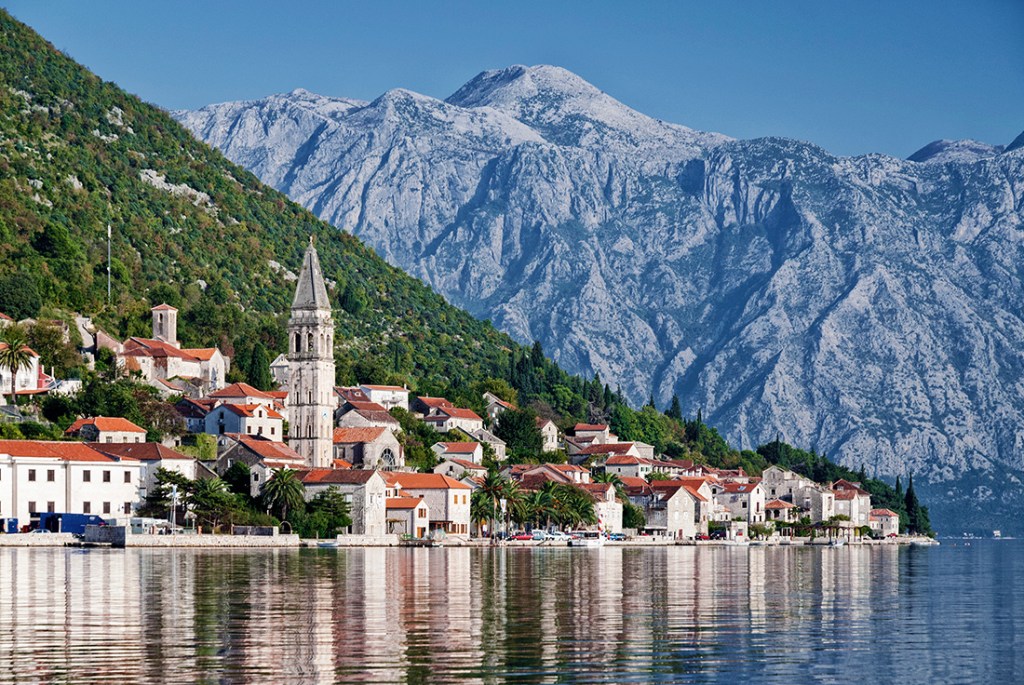
The traditional Balkan village mountain landscape of Kotor Bay in Montenegro.
Montenegro traces 182 miles of rugged Adriatic coastline and has an interior filled with canyons, lakes, rivers, waterfalls, mountains and UNESCO World Heritage sites like Kotor and Durmitor National Park. “This ruggedly beautiful Mediterranean country is home to a captivating history, one of Europe’s most beautiful bays, a stunning mountainous interior and charming seaside towns and beaches,” says Janel Jensen, an REI Adventures program manager. “Experience the best of all of these following the Via Dinarica Trail and enjoy the genuine hospitality of your Montenegrin hosts.”
Montenegro’s sunny coastline has been on the tourist radar for some time now but the newly connected Via Dinarica Trail is an amazing reason to visit and explore a side of Montenegro that few other visitors even know about. The trail runs for 1,200 miles from Slovenia along the backbone of the Dinaric Alps through six countries before reaching Macedonia. The Montenegro portion of the trail includes a stunning coastal and interior section, known as the Blue and White Trails. The development of the Via Dinarica follows the rapid pace of the Balkans as one of Europe’s “must-go” destinations.
Portugal
Why travel to Portugal? The historic cities, stunning beaches, volcanic islands and world-renowned wine regions are all good reasons. “Get a taste of authentic and culturally rich Portugal by hiking the Vicentina Trail on the beautiful Algarve Coast or making your way across stunning countryside through small villages on the Portuguese Camino,” Jensen says.
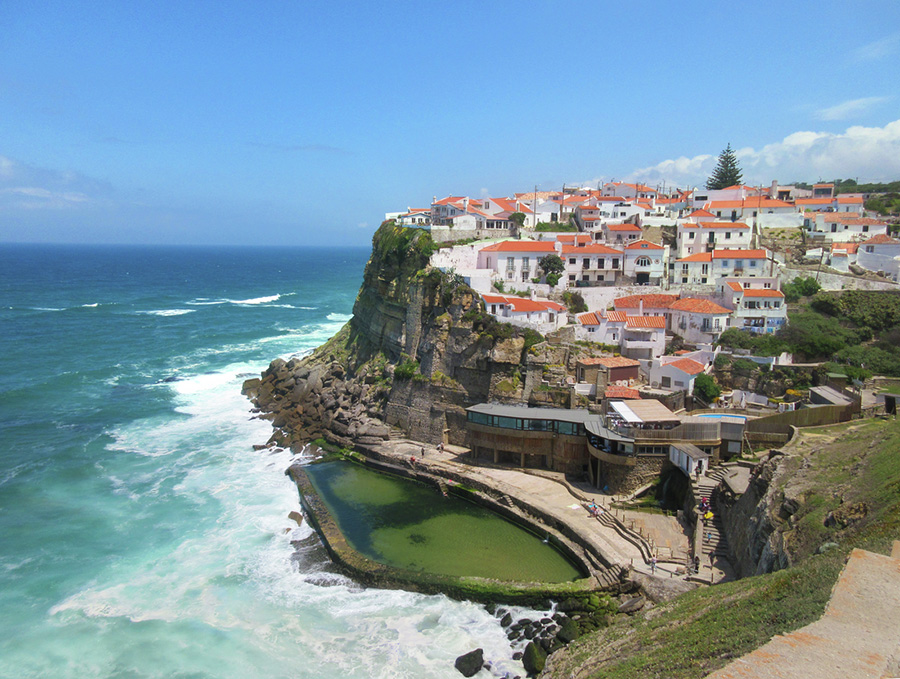
Kissed by the Atlantic, Portugal’s Azenhas do Mar enjoys prime real estate.
Portugal is quite varied in its terrain and includes everything from the majestic coastlines of the Alentejo and Algarve, forested mountains and river valleys like that of the famous Rio Douro. Don’t forget the breathtaking islands of Madeira and the Azores, which are part of Portugal and have volcanic origins.
Where to go? We love the buff-colored beaches, secluded coves, medieval castles, cork oak forests, olive orchards and whitewashed fishing villages of the Algarve along the sun-drenched southwestern Atlantic coast. The central region, another place you can’t miss, boasts lands that once housed the Knights Templar.
Sri Lanka
Thousand-year-old Buddhist temples and incredible food, a subtropical climate, misty highlands filled with tea plantations, spices and coconuts and wildlife (elephants, leopards, birds and more)—what more could you want? “This place hits the center of the Venn diagram for adventure seekers,” says Jeff Stivers, another program manager with REI Adventures. “Whether it’s spiritual introspection, historical investigation, wildlife observation, taste-bud appreciation or wanderlust rejuvenation, Sri Lanka has it all.”
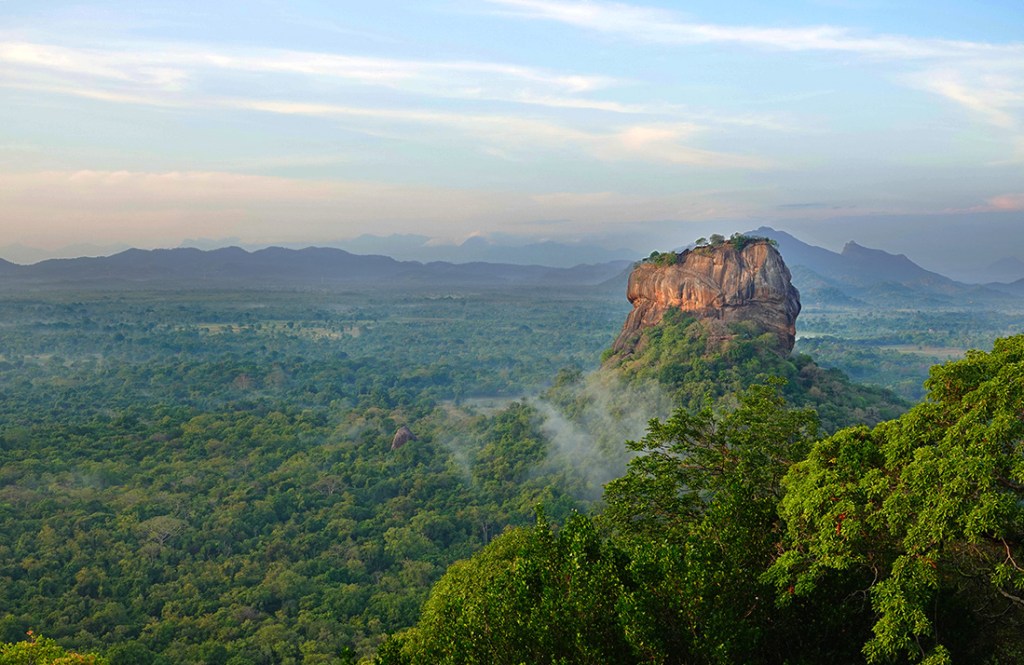
The ancient rock fortress of Sigiriya sits in sentry over the Matale District of Sri Lanka.
Sri Lanka has been an emerging destination for several years now, with regular visitors from the United Kingdom, Australia, New Zealand and China, but it’s just starting to be on the radar for people in the U.S.
The Southeast Asian country has always been beautiful, but what sets Sri Lanka apart is the nation’s many opportunities for adventure travel. Tourism halted during the long civil war that ended in 2009, and activities like biking, hiking and whitewater rafting were not extremely common until recently. But the infrastructure to support these types of activities is now being formed, and a new way to explore the wilds of Sri Lanka and its thriving cultural centers is emerging. What to do? Cycle and hike in the highlands, surf the east coast in the Bay of Bengal, safari on land or sea and visit the many Buddhist temples and ancient cities.
Zambia
Zambia is perhaps the best place in Africa to go on walking safari. Geographically, it’s a landlocked country, with a mix of subtropical, tropical and semi-arid environments. The landscape is carved by massive rivers—including the mighty Zambezi—that wind through the country and act as a transportation network as well as a water source for wildlife. Massive grasslands make way for verdant valleys and woodlands. The country’s topography is expansive.
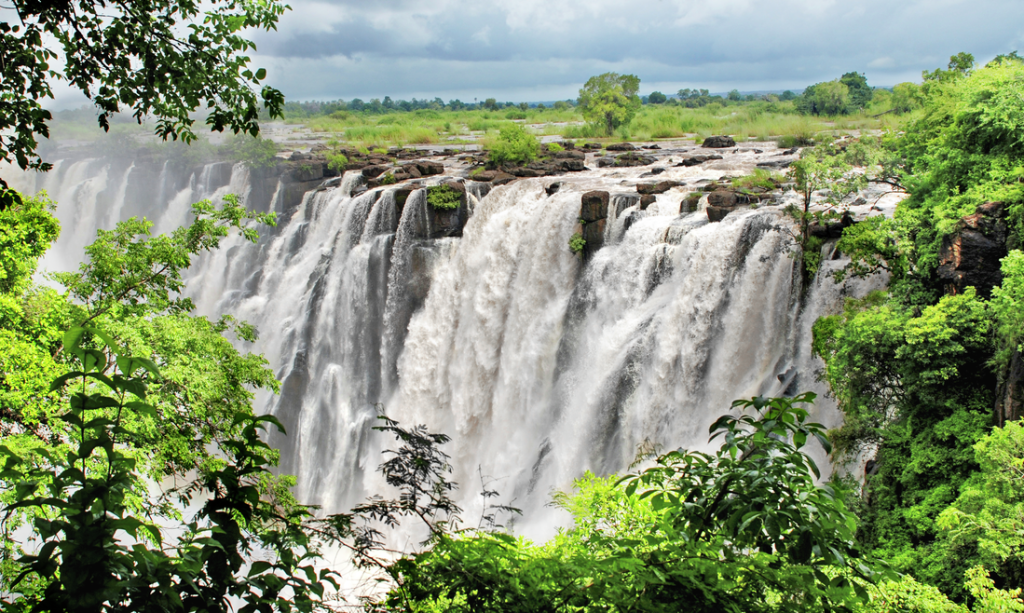
The tumult and turbulence of Zambia’s Victoria Falls rumbles in the distance.
“Zambia is an incredible destination for safari as well as learning the rich cultural history,” says Stivers. “Combine it with a trip to Lake Malawi, and you’ll not be disappointed!”
That’s not all. Hike, fly fish and raft at Victoria Falls, explore South Luangwa and Kafue National Parks, canoe on the turbulent Zambezi River or even try angling for the aggressive tiger fish. Adventure awaits.
